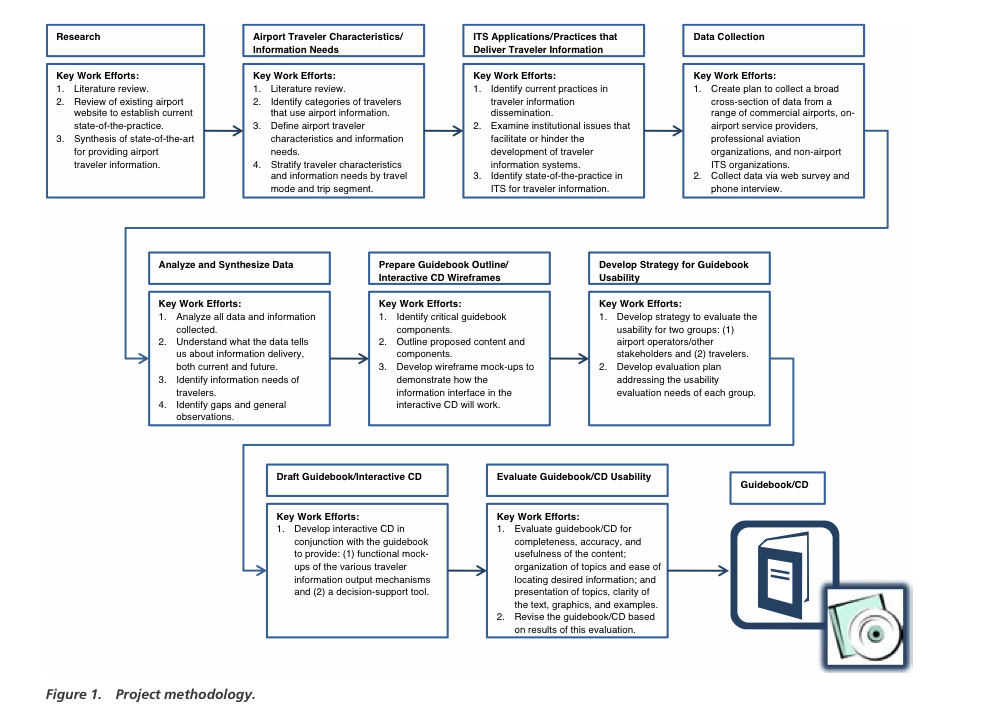AIRPORT COOPERATIVE RESEARCH PROGRAM
Summary
Based on the research and data collected throughout the course of the project, it became evident that there is significant opportunity to enhance the efficiency, safety, and convenience of airport traveler access information through the increased use of intelligent transportation systems (ITS) technologies. In the broadest sense, ITS applications encompass a range of wireless and wired communications-based information and electronics technologies such as websites, handheld devices, detection devices and sensors, closed circuit television cameras, kiosks, and dynamic message signs.
Airport travelers, both resident and non-resident, often need real-time information about the various segments of their ground access trip. Many airport travelers have become accustomed to obtaining necessary travel information using a variety of advanced technologies and often need real-time information on parking availability, access delays, and alternative travel modes. Currently, there is considerable diversity within the airport industry in the type, amount, integration, and method of dissemination of ground access travel information made available to customers. While most airports’ primary method of communicating this information to the traveler typically occurs through a website, there are many other sources and methods of information currently in use at airports across the United States and internationally. Optimally, the traveler who has become accustomed to the method of attaining ground access information in one US airport would quickly and efficiently be able to access similar information (e.g., roadway conditions, security wait times, parking availability, etc.) at an airport with which he/she was not familiar.
The increased desire of travelers to access real-time information or for technology applications to “push” them all of the information that they need is indicative of the increasing sophistication of the technologies that travelers are using. These and other fast-paced technology shifts are significantly expanding the market for traveler information services. The fundamental trend is that travelers want more information, available across a wider range of applications and devices. Presenting information on road conditions and travel times, roadway incidents, parking location and availability, public transit options and schedule status, alternative mode options, security, and flight details in a consistent and coordinated format will greatly improve the ground access experience for airport travelers and should be the goal of every commercial airport. Airports will also need to be prepared to monitor the fast-paced evolution of technology applications and determine how best to evolve their ITS to prevent obsolescence over time.
The information provided in the guidebook and accompanying interactive CD-ROM is intended to provide uniform guidance to airport operators so that they can simply, efficiently, and interactively evaluate options for providing both pre-trip and real-time ground access information to travelers with the ultimate goal of enhancing the customer experience.
About The Airport Cooperative Research Program (ACRP)
www.trb.org/ACRP
” The Airport Cooperative Research Program (ACRP) is an industry-driven, applied research program that develops near-term, practical solutions to problems faced by airport operators. ACRP is managed by the Transportation Research Board (TRB) of the National Academies and sponsored by the Federal Aviation Administration (FAA). The research is conducted by contractors who are selected on the basis of competitive proposals.“
Tags: AIRPORT COOPERATIVE RESEARCH PROGRAM, airports, travelers







 RSS Feed
RSS Feed